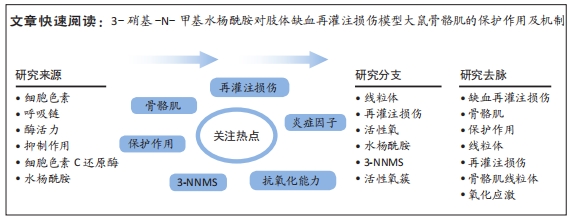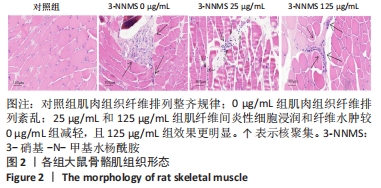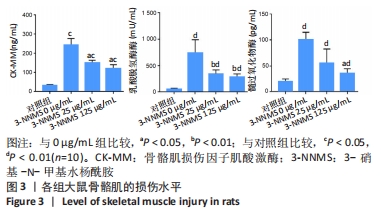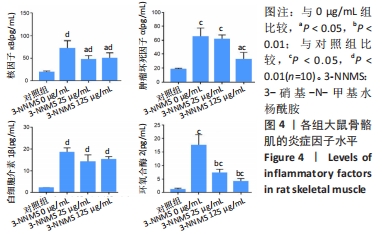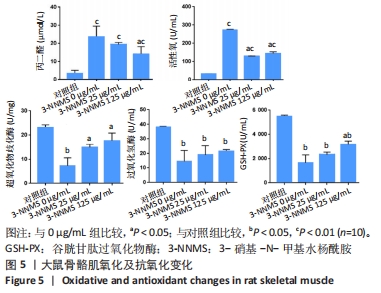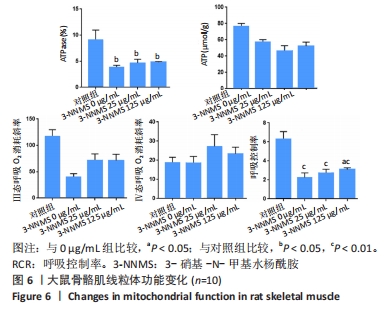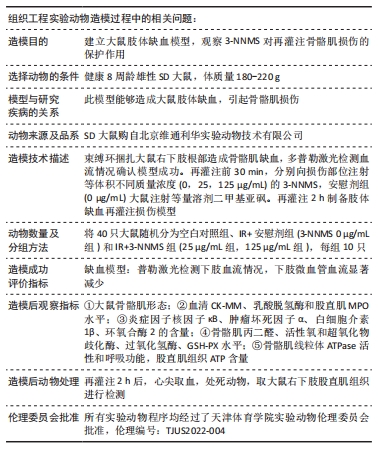[1] DEFRAIGNE JO, PINCEMAIL J. Local and systemic consequences of severe ischemia and reperfusion of the skeletal muscle. Physiopathology and prevention. Acta Chir Belg. 1998;98(4):176-186.
[2] CARMELI E, AIZENBUD D, ROM O. How do skeletal muscles die? An overview. Adv Exp Med Biol. 2015;861:99-111.
[3] BUCHALTER DB, KIRBY DJ, EGOL KA, et al. Can lessons learned about preventing cardiac muscle death be applied to prevent skeletal muscle death?. Bone Joint Res. 2020;9(6):268-271.
[4] MURPHY MP. How mitochondria produce reactive oxygen species. Biochem J. 2009;417(1):1-13.
[5] BRAND MD, GONCALVES RL, ORR AL, et al. Suppressors of Superoxide-H2O2 Production at Site IQ of Mitochondrial Complex I Protect against Stem Cell Hyperplasia and Ischemia-Reperfusion Injury. Cell Metab. 2016;24(4):582-592.
[6] HOFFMAN DL, BROOKES PS. Oxygen sensitivity of mitochondrial reactive oxygen species generation depends on metabolic conditions. J Biol Chem. 2009;284(24):16236-16245.
[7] ORFANY A, ARRIOLA CG, DOULAMIS IP, et al. Mitochondrial transplantation ameliorates acute limb ischemia. J Vasc Surg. 2020;71(3):1014-1026.
[8] JIANG L, YIN X, CHEN YH, et al. Proteomic analysis reveals ginsenoside Rb1 attenuates myocardial ischemia/reperfusion injury through inhibiting ROS production from mitochondrial complex I. Theranostics. 2021;11(4):1703-1720.
[9] 徐建兴, 钟永利, 肖燕, 等. 3-硝基-N-甲基水杨酰胺对琥珀酸细胞色素C还原酶的抑制作用[J]. 生物化学杂志,1987,3(2):139-145.
[10] 沈明, 徐建兴, 陈清棠. 3-硝基-N-甲基-水杨酰胺对大鼠局灶脑缺血再灌注损伤的保护作用[J]. 中风与神经疾病杂志,2002,19 (1):18-20.
[11] 王硕, 刘文英, 吕超凡, 等. 含3-硝基-N-甲基水杨酰胺的新型保护液对冷缺血保存离体大鼠心脏的保护[J]. 中国组织工程研究,2022,26(8): 1250-1257.
[12] 白毅. 3-硝基-N-甲基水杨酰胺对SD大鼠下肢缺血再灌注损伤保护作用探究[D].天津:天津体育学院,2020.
[13] MCLEISH M J, KENYON GL. Relating structure to mechanism in creatine kinase. Crit Rev Biochem Mol Biol. 2005;40(1):1-20.
[14] HERRERO DE LA PARTE B, ROA-ESPARZA J, CEARRA I, et al. The prevention of ischemia-reperfusion injury in elderly rats after lower limb tourniquet use. Antioxidants (Basel). 2022;11(10):1936.
[15] MERCHANT SH, GURULE DM, LARSON RS. Amelioration of ischemia-reperfusion injury with cyclic peptide blockade of ICAM-1. Am J Physiol Heart Circ Physiol. 2003;284(4):H1260-1268.
[16] PARADIS S, CHARLES A L, MEYER A, et al. Chronology of mitochondrial and cellular events during skeletal muscle ischemia-reperfusion. Am J Physiol Cell Physiol. 2016;310(11):C968-982.
[17] GILLANI S, CAO J, SUZUKI T, et al. The effect of ischemia reperfusion injury on skeletal muscle. Injury. 2012;43(6):670-675.
[18] KHARBANDA R K, PETERS M, WALTON B, et al. Ischemic preconditioning prevents endothelial injury and systemic neutrophil activation during ischemia-reperfusion in humans in vivo. Circulation. 2001;103(12):1624-1630.
[19] KVIETYS PR, GRANGER DN. Role of reactive oxygen and nitrogen species in the vascular responses to inflammation. Free Radic Biol Med. 2012;52(3): 556-592.
[20] GUILLOT M, CHARLES AL, CHAMARAUX-TRAN TN, et al. Oxidative stress precedes skeletal muscle mitochondrial dysfunction during experimental aortic cross-clamping but is not associated with early lung, heart, brain, liver, or kidney mitochondrial impairment. J Vasc Surg. 2014;60(4):1043-1051.e1045.
[21] GHALY A, MARSH DR. Ischaemia-reperfusion modulates inflammation and fibrosis of skeletal muscle after contusion injury. Int J Exp Pathol. 2010; 91(3):244-255.
[22] KÜÇÜK A, POLAT Y, KILIÇARSLAN A, et al. Irisin protects against hind limb ischemia reperfusion injury. Drug Des Devel Ther. 2021;15:361-368.
[23] TONG J, ZHANG Y, YU P, et al. Protective effect of hydrogen gas on mouse hind limb ischemia-reperfusion injury. J Surg Res. 2021;266:148-159.
[24] NATH M, AGARWAL A. New insights into the role of heme oxygenase-1 in acute kidney injury. Kidney Res Clin Pract. 2020;39(4):387-401.
[25] CHOUCHANI ET, PELL VR, GAUDE E, et al. Ischaemic accumulation of succinate controls reperfusion injury through mitochondrial ROS. Nature. 2014;515(7527):431-435.
[26] WANG Y, CAI J, TANG C, et al. Mitophagy in acute kidney injury and kidney repair. Cells. 2020;9(2):338.
[27] 王硕. 3-硝基-N-甲基水杨酰胺对大鼠离体心脏保存的效应[D].天津:天津体育学院,2019.
[28] STEVEN S, DAIBER A, DOPHEIDE JF, et al. Peripheral artery disease, redox signaling, oxidative stress - basic and clinical aspects. Redox Biol. 2017;12: 787-797.
[29] NAKANO H, NAKAJIMA A, SAKON-KOMAZAWA S, et al. Reactive oxygen species mediate crosstalk between NF-kappaB and JNK. Cell Death Differ. 2006;13(5): 730-737.
[30] LEJAY A, MEYER A, SCHLAGOWSKI AI, et al. Mitochondria: Mitochondrial participation in ischemia-reperfusion injury in skeletal muscle. Int J Biochem Cell Biol. 2014;50:101-105.
[31] OZKOK E, YORULMAZ H, ATES G, et al. Amelioration of energy metabolism by melatonin in skeletal muscle of rats with LPS induced endotoxemia. Physiol Res. 2016;65(5):833-842.
[32] HUANG Y, CHEN K, REN Q, et al. Dihydromyricetin attenuates dexamethasone-induced muscle atrophy by improving mitochondrial function via the PGC-1α pathway. Cell Physiol Biochem. 2018;49(2):758-779.
|
